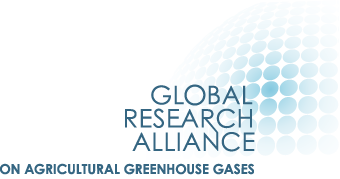Guidelines for field measurements of agricultural greenhouse gas sources and sinks
This book is designed to provide needed guidance on measurement methods to:
- National agricultural research centers (NARS).
- Compilers of national GHG inventories.
- Developers of national and subnational mitigation plans that include agriculture.
- Agricultural commodity companies and agricultural development projects.
- Students and instructors.
The entire book is available for free download at Springer. Or click a chapter link below to start reading online or download a specific chapter. Easily link to references and additional resources from these pages.
Foreword
In this book, the author team describe concepts and methods for measurement of greenhouse gas emissions and assessment of mitigation options in smallholder agricultural systems, developed as part of the SAMPLES project. The SAMPLES (Standard Assessment of Agricultural Mitigation Potential and Livelihoods) system adapts existing internationally accepted methodologies to allow a range of stakeholders to assess greenhouse gas (GHG) emissions from different agricultural activities, to identify how these emissions might be reduced (i.e., mitigation), and to provide data through an online dataset that can be used to aid in these efforts.
The book is divided into three sections:
(1) designing a measurement program to allow users to identify what measurements are needed and how to go about taking the measurements,
(2) data acquisition, describing how to deal with complex issues such as land use change, and (3) identifying mitigation options, which deals with scaling issues, how to use models, and how to assess trade-offs. Within each section is a series of chapters, written by leading experts in the field, providing clear guidelines on how to deal with each of the issues raised.
The work was begun at an international workshop in 2012, and the authors have since produced this synthesis. Through this work, the authors provide a comprehensive and transparent system to allow stakeholders to calculate and reduce agricultural GHG emissions and assess other impacts. Since it builds on established and internationally accepted methodologies it is robust, yet the authors have managed to break down the complex and potentially overwhelming concepts and methods into bite-sized chunks. Difficult subjects such as inaccuracy and uncertainty are not avoided, yet the authors manage to make these topics accessible and the process manageable.
Potential users include, but are not limited to, national agricultural research centers, developers of national and subnational mitigation plans that include agriculture, agricultural commodity companies and agricultural development projects, and students and instructors. Anyone with an interest in agriculture, greenhouse gas emissions, and how to minimize these emissions will find the book immensely useful.

